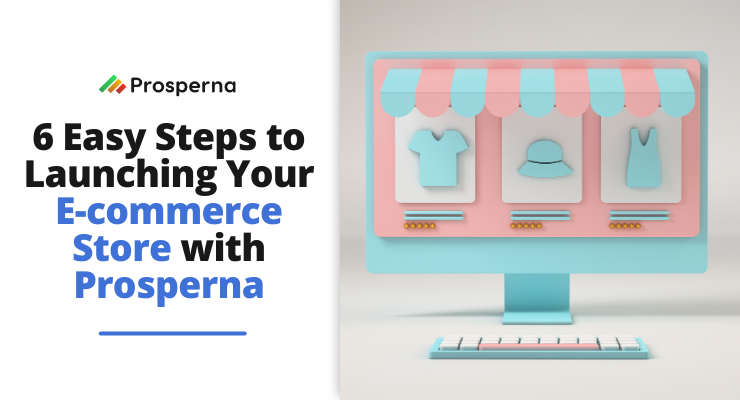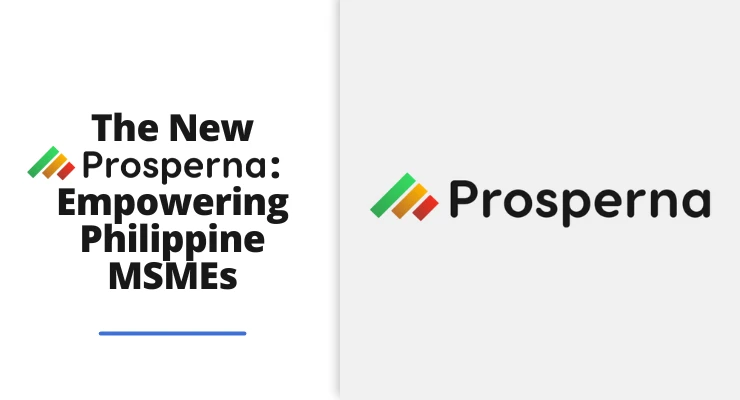Having an online store in the Philippines is quickly gaining traction as businesses adapt to the new norm that’s starting to make traditional selling obsolete. Foreign and local entrepreneurs continue looking for opportunities to continue their operations or start a new one in the eCommerce space as a permanent solution.
Thanks to innovation, technology has enabled businesses that were forced to take a step back from their old ways to leverage the ever-expanding online market. To help your business adjust to eCommerce and new consumer behavior, here are 6 easy and affordable ways for you to start an online store in the Philippines
1. Google My Business
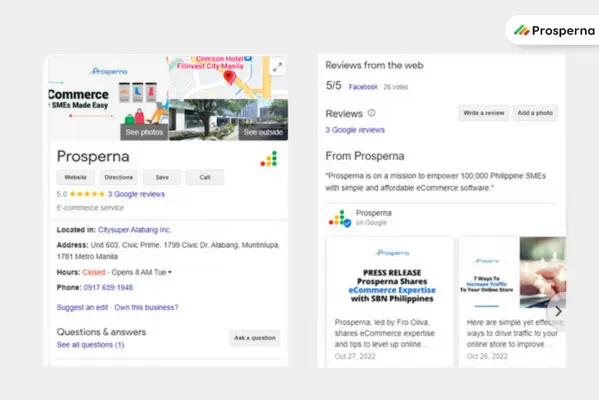
The simplest way you can create an online presence is by being “Google-able”.
Doing this allows your business to appear in search engine results as a suggestion when someone is looking for a product or service that is similar to what you’re offering.
You will also be marked on Google Maps and other Google apps out there.
It becomes an effective way to start an online store because you can:
- Receive and respond to customer reviews.
- Answer inquiries through the “Question & Answer” section.
- Post photos and videos of your company, team, products, and services.
- Upload product menus and catalogs with pricing.
- Market news, updates, and any special offers you may launch.
- Create surveys to help you understand consumer preferences.
- Announce your operating hours for customer support, delivery, and in-store purchases.
- Share all of your selling channels, such as a physical store, mobile number, social media, listing platform, and, more importantly, your eCommerce website.
This is highly recommended if you want to legitimize your business on the Internet, allow new customers to contact you, and make recommendations to others by leaving a positive review.
2. Social Media
This umbrella term refers to the popular websites that most people use nowadays, not just for their intended purpose of socializing and networking but also for selling goods and services.
Apps like Facebook, Instagram, Twitter, LinkedIn, Pinterest, and YouTube are heavily used nowadays by many businesses to market and sell their products online.
You can use your personal profile for personal or family businesses, but most of the time people create business profiles or separate pages specifically for selling.
This expands your online presence and your market reach, as each website has its own large user demographic that may be suitable for your business.
For the most part, this method of social media selling carries its own risks of being casual and reliant on trust because transactions depend on what the seller offers and are fully shouldered by the buyer.
Making payments and deliveries can seem unsecured and compromised since most communication occurs via messaging only.
Remember, social media is built for socializing. You can market and entice buyers, but performing actual transactions there takes time to measure and maintain.
3. Groups and Forums
A subcategory of social media marketing is joining online groups, communities, and forums. This is particularly apparent on websites like Facebook, Pinterest and Reddit.
What makes this different from the previous point is that people form these groups, their way of creating an online marketplace specific to certain “buy-and-sell” groups is usually categorized by product type or location.
These are used either as a marketing tool to direct people to their actual website or business profile to complete the purchase, or on their own by making posts to sell.
Buyers can view and usually haggle prices with sellers because, most of the time, they can just opt for another seller offering the same product for much less.
This is good for family businesses looking to expand their networks in the industry or for local businesses in their area. They can understand the types of customers that make purchases, their preferences, and how competitors are doing.
4. Chat and Messaging Applications
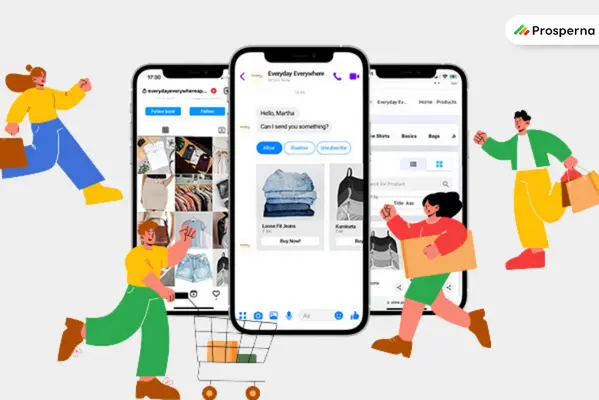
Whether on mainstream social media or their own chat platforms, these “chat apps” can somewhat function as an online store in the Philippines, and other parts of the world.
Brands can create their own official channels or groups for businesses, where potential customers can subscribe to or join these groups to watch out for offers or new product releases.
At the same time, they can perform transactions on these messaging platforms.
- Line
- Messenger
- Telegram
- Viber
Back in 2017, it was thought to be the future of eCommerce because of its personalized conversation format and experience that helps connect with customers on a deeper level.
Today, this is still practiced by local businesses looking to sell within their community or personal network. It can work if you can stay active and build trust, but there are better ways to enter eCommerce, in my opinion.
5. Online Listings
Despite being the slowest country in the Southeast Asia region to adopt eCommerce, the Philippines is brimming with businesses looking to sell online, and most of them resort to listing on websites like Lazada and Shopee, or Carousell for smaller businesses.
Bigger companies can afford platforms like Amazon for worldwide market reach.
To an extent, starting your online store can be aided by these websites because they have an established system, but in the long run, you limit your profitability because of dealing with commission rates.
You also lack competitive advantage and brand-building because, at the end of the day, it’s the platform that the customer trusts and not you as a business.
On the other hand, an advantage of using these listing websites is that they can be integrated with your own eCommerce website, so they can function as an omnichannel (especially if built with the new Prosperna platform).
That way, you can direct your customers to your store without competition and, at the same time, show off your company branding.
6. Online Store Builder
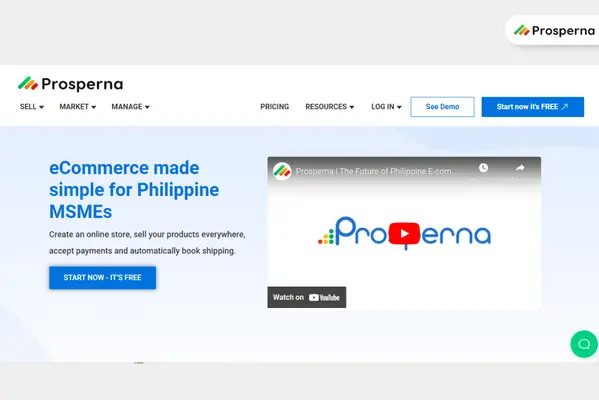
Perhaps the best investment you can make for your business is building an eCommerce website to function as an online store in the Philippines.
We’ve taught you the basics of setting up an eCommerce business, and one of the major points we mentioned is getting a reliable eCommerce website builder.
We’ve shared in our blogs, comparing and breaking down the costs of different “popular” website builders like Shopify and WooCommerce.
These are the go-to builders for Filipinos because they are considered to be “on-trend,” but there are many online store builders out there that offer the same, if not better, features for a fraction of the price.
Like Prosperna, your all-in-one eCommerce store that enables you to create an online store, accept all types of payments and automatically book shipping.
Filipinos are ready to go cashless, and these eCommerce trends we shared are more relevant than ever today.
Building your own online store includes accepting contactless payments and order fulfillment for their convenience in a secured manner.
You also list your products exclusively at ZERO competition, and you have the freedom to market and sell as you please.
Conclusion
If you’re looking for a sign that you need to take part in eCommerce, this is it! There are opportunities to sell online with low barriers to entry, so it’s only wise for your business to transform digitally.
Whether you choose to start your online store on social media, marketplaces, or your own website, it’s important to focus on building a strong brand, providing excellent customer service, and offering high-quality products that meet the needs of your target audience.
It’s my personal recommendation that you build your online store with Prosperna, for it’s built specifically to help growing businesses in the Philippines, powered by technology and features that put the customer first without breaking the bank.
Prosperna, Your Partner to eCommerce Success
Prosperna is an all-in-one eCommerce platform for Philippine businesses and digital creators. We are on a mission to empower 1 million Filipinos with simple and affordable eCommerce solutions.
In fact, we are super passionate about helping Philippine businesses and digital creators we’re giving you a free account forever!
Want to start selling online? Create your free-forever Prosperna account now.


